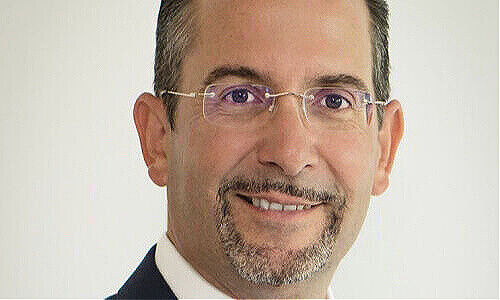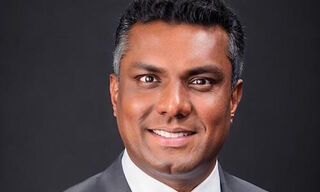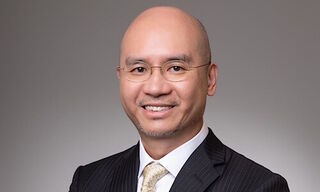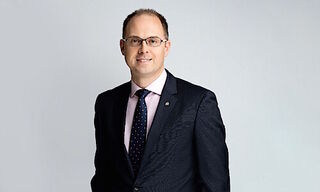Credit Suisse needs a fresh strategy. It should focus on wealth management and digitalization instead of investment banking, which is risk-prone. It doesn't have much time as competitors loom on the horizon, Teodoro Cocco writes in a piece for finews.first.
This article is published on finews.first, a forum for authors specialized in economic and financial topics.
Credit Suisse (CS) shareholders are to gather – virtually - for the annual general meeting in few days. Morale has probably been better. The events of the past few weeks have bared strategic flaws. It would be fatal to characterize the losses as unfortunate, isolated events. Urgent action is now required as the recent mishaps are only making it fall farther behind international peers.
An expected strategic review by incoming chairman Antonio-Horta-Osorio is probably the bank’s last chance to define its own future from a position of relative strength. A hard look at the basics of its business model and how it intends to generate long-term value for shareholders are key questions the board should answer. The «One Bank» strategy and the interplay between investment banking, asset management and wealth management need to be sorely tested.
«Why buy a cow when all you want is a glass of milk»
A previous CEO managed to encapsulate the dilemma 20 years ago. «Why buy a cow when all you want is a glass of milk,» Lukas Muehlemann said then. At the time, the question was whether CS should buy Winterthur Insurance to create a bancassurance conglomerate. It was bought anyway. In hindsight, it turned out to be a large strategic misstep. The same question holds true today. What investment banking services are really needed internally, and which ones can be bought or syndicated?
CS is not alone in pursuing a business model of a large, integrated universal bank. Its long-term performance is at best average when compared with international competitors.
But is the international universal banking model where most products and services are generated by internal businesses even up to date?
The question is not easily answered but the argument for an integrated model does seem to be weakening. Post-financial crisis regulation requires more segregation and independence between businesses, making synergies more difficult. But the main driver is technological development.
«Having the critical mass and necessary expertise in all areas is not realistic»
The basic idea of the integrated strategy whereby products and services are generated internally is seductive at first glance because of the promise of comprehensive, one-stop-shop client coverage. In practice, there are operational challenges.
Having the critical mass and necessary expertise in all areas is not realistic. At the same time, creating synergies that generate real value for shareholders from many international locations is not easy. The model looks good on paper, but it generates exceedingly high costs outside the domestic market and – as recent events indicate – it is hard to manage.
The argument that broader diversification would smoothen revenue streams has also not held true. The investment banking business does not provide a buffer for the group but is a «High-Beta» business that leads to extreme outcomes. Any smoothing between businesses only happens on one side. In poor capital market conditions, the relatively stable earnings from the private client business help to limit fluctuations on the group’s bottom line. But it is rare for investment banking earnings to balance out any revenue shortfalls from the wealth management business.
«The point is whether these services need to be generated internally or whether they can’t be syndicated or bought»
There are private clients who need investment banking services. The point is whether these services need to be generated internally or whether they can’t be syndicated or bought.
Nobel prize winner Roland Coase has an answer from an economics perspective with his famous transaction cost approach. The costs to provide a good or service by a company in relation to the same good or service provided by the market, platforms or networks delineate what the company’s optimal structure is. Fundamentally, it is always about the level of transaction costs (search and information costs, bargaining costs, etc).
«It is getting increasingly easier to buy third-party services from the market from the best bidder»
For example, in terms of an interest rate hedge, is it more advantageous to executive and settle it with the internal teams at the investment bank or would it be cheaper to find the cheapest one on offer from a third party in the market and then buy it?
Digitalization of value chains, the establishment of new, digital marketplaces and the increasing standardization of bank interfaces are moving the barriers related to optimal organizational structures. The trend is toward digital networks and marketplaces and away from proprietary products created internally by hierarchical organizations.
Digital marketplaces make it is easy to find a third-party interest rate hedge at the best possible market price in seconds – you don’t need your own investment bank. Yet, it doesn’t mean that the «One Bank» strategy does not make any sense, but that the thresholds have changed. It is getting increasingly easier to buy third-party services from the market from the best bidder. You don’t need to own the entire infrastructure of an investment bank including capital requirements and balance sheet risks.
«In truth Credit Suisse never became a real One Bank»
The investment bank would then only provide a solution for clients when it was «best-in-class» or at least in a position to provide synergies with other products. There has been little evidence that the integrated universal banking model (investment banking and wealth management) provides superior shareholder value. It is not very credible to assume it would simply start working now all of a sudden.
In truth Credit Suisse never became a real «One Bank» but has always been – historically, culturally and factually – a construct of two different banks. On one side you have the Swiss business and the wealth management business borne from that and on the other side, the Anglo-Saxon dominated investment bank.
«Credit Suisse is in a difficult situation»
The Asia business and asset management are more heterogeneous. Depending on the specific unit in question, you can put elements of them on one side or the other. The synergies were never that significant to compensate for the additional equity needed by the investment bank to justify reasonable risk-adjusted returns
CS is in a difficult situation. Tidjane Thiam’s new strategy has caused significant losses on one side. On the other, performance without them would have been very good.
The provides fodder for those who want to continue the current strategy with a few minor adjustments. But taking this approach would be a missed (last?) chance. It would be advisable to concentrate on your own strengths in difficult times.
The first cornerstone for a new strategic direction for units would keep wealth management in-house as that is a core competence of CS. With that, significantly less capital would be needed. From the point of view of shareholders, the business would be least as profitable as it is today – but the risks would be far lower. A second, complementary cornerstone could be a new digital platform integrating third-party investment banking and asset management services.
«There is not much time left»
That would mean that the promise of a «One Bank» would be fulfilled virtually. It would require far less capital and massively reduce the number of conflicts of interest, likely benefiting the share price significantly.
There is not much time left. Competitors are positioning themselves on the horizon as the market consolidates. Andrea Orcel’s appointment as CEO of Unicredit may see a new, aggressive player in the European banking market. Orcel, previously head of UBS investment banking, knows Swiss banking - and he could be casting an eye over Credit Suisse. He won’t be alone.
Teodoro D. Cocca has been a Professor of Asset and Wealth Management at Johannes Kepler University Linz since 2006. Prior to that, he worked for several years at Citibank in both investment and private banking, conducted research at the Stern School of Business in New York, and taught at the Swiss Banking Institute in Zurich. In addition, the Swiss with Italian roots is an associate professor of private banking at the Swiss Finance Institute (SFI) in Zurich and advises financial companies and authorities in Switzerland and abroad. From 2011 to 2020, he was a member of the Board of Directors of VP Bank, where he chaired the Strategy and Digitalization Committee. He writes regularly as a columnist for finews.ch.
Previous contributions: Rudi Bogni, Peter Kurer, Rolf Banz, Dieter Ruloff, Werner Vogt, Walter Wittmann, Alfred Mettler, Robert Holzach, Craig Murray, David Zollinger, Arthur Bolliger, Beat Kappeler, Chris Rowe, Stefan Gerlach, Marc Lussy, Nuno Fernandes, Richard Egger, Maurice Pedergnana, Marco Bargel, Steve Hanke, Urs Schoettli, Ursula Finsterwald, Stefan Kreuzkamp, Oliver Bussmann, Michael Benz, Albert Steck, Martin Dahinden, Thomas Fedier, Alfred Mettler, Brigitte Strebel, Mirjam Staub-Bisang, Nicolas Roth, Thorsten Polleit, Kim Iskyan, Stephen Dover, Denise Kenyon-Rouvinez, Christian Dreyer, Kinan Khadam-Al-Jame, Robert Hemmi, Anton Affentranger, Yves Mirabaud, Katharina Bart, Frédéric Papp, Hans-Martin Kraus, Gerard Guerdat, Mario Bassi, Stephen Thariyan, Dan Steinbock, Rino Borini, Bert Flossbach, Michael Hasenstab, Guido Schilling, Werner E. Rutsch, Dorte Bech Vizard, Adriano B. Lucatelli, Katharina Bart, Maya Bhandari, Jean Tirole, Hans Jakob Roth, Marco Martinelli, Thomas Sutter, Tom King, Werner Peyer, Thomas Kupfer, Peter Kurer, Arturo Bris, Frederic Papp, James Syme, Dennis Larsen, Bernd Kramer, Ralph Ebert, Armin Jans, Nicolas Roth, Hans Ulrich Jost, Patrick Hunger, Fabrizio Quirighetti, Claire Shaw, Peter Fanconi, Alex Wolf, Dan Steinbock, Patrick Scheurle, Sandro Occhilupo, Will Ballard, Nicholas Yeo, Claude-Alain Margelisch, Jean-François Hirschel, Jens Pongratz, Samuel Gerber, Philipp Weckherlin, Anne Richards, Antoni Trenchev, Benoit Barbereau, Pascal R. Bersier, Shaul Lifshitz, Klaus Breiner, Ana Botín, Martin Gilbert, Jesper Koll, Ingo Rauser, Carlo Capaul, Claude Baumann, Markus Winkler, Konrad Hummler, Thomas Steinemann, Christina Boeck, Guillaume Compeyron, Miro Zivkovic, Alexander F. Wagner, Eric Heymann, Christoph Sax, Felix Brem, Jochen Moebert, Jacques-Aurélien Marcireau, Ursula Finsterwald, Claudia Kraaz, Michel Longhini, Stefan Blum, Zsolt Kohalmi, Karin M. Klossek, Nicolas Ramelet, Søren Bjønness, Lamara von Albertini, Andreas Britt, Gilles Prince, Darren Willams, Salman Ahmed, Stephane Monier, and Peter van der Welle, Ken Orchard, Christian Gast, Jeffrey Bohn, Juergen Braunstein, Jeff Voegeli, Fiona Frick, Stefan Schneider, Matthias Hunn, Andreas Vetsch, Fabiana Fedeli, Marionna Wegenstein, Kim Fournais, Carole Millet, Ralph Ebert, Swetha Ramachandran, Brigitte Kaps, Thomas Stucki, Teodoro Cocca, Neil Shearing, Claude Baumann, Tom Naratil, Oliver Berger, Robert Sharps, Tobias Mueller, Florian Wicki, Jean Keller, Fabrizio Pagani, Niels Lan Doky, Karin M. Klossek, Ralph Ebert, Johnny El Hachem, Judith Basad, Katharina Bart, Thorsten Polleit, Bernardo Brunschwiler, Peter Schmid, Karam Hinduja, Stuart Dunbar, Zsolt Kohalmi, Raphaël Surber, Santosh Brivio, Gérard Piasko, Mark Urquhart, Olivier Kessler, Bruno Capone, Peter Hody, Lars Jaeger, Andrew Isbester, Florin Baeriswyl, and Michael Bornhaeusser, Agnieszka Walorska, Thomas Mueller, Michael Welti, Ebrahim Attarzadeh, Marcel Hostettler, Hui Zhang, Michael Bornhaeusser, Reto Jauch, Angela Agostini, Guy de Blonay, Tatjana Greil Castro, Jean-Baptiste Berthon, Marc Saint John Webb, Dietrich Goenemeyer, Mobeen Tahir, Didier Saint-Georges, Serge Tabachnik, Rolando Grandi, Vega Ibanez, Beat Wittmann, and Carina Schaurte, and David Folkerts-Landau, and Andreas Ita.


























